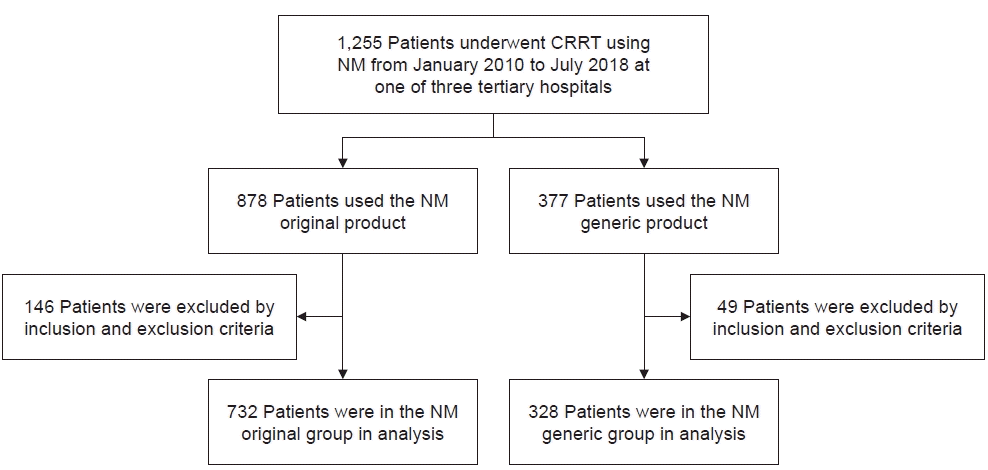1. Choi JY, Kang YJ, Jang HM, Jung HY, Cho JH, Park SH, et al. Nafamostat mesilate as an anticoagulant during continuous renal replacement therapy in patients with high bleeding risk: a randomized clinical trial. Medicine (Baltimore). 2015; 94:e2392.
2. Kim SY, Kim YN, Shin HS, Jung Y, Rim H. The influence of hypophosphatemia on outcomes of low- and high-intensity continuous renal replacement therapy in critically ill patients with acute kidney injury. Kidney Res Clin Pract. 2017; 36:240–9.
3. Legrand M, Tolwani A. Anticoagulation strategies in continuous renal replacement therapy. Semin Dial. 2021; 34:416–22.
4. Brandenburger T, Dimski T, Slowinski T, Kindgen-Milles D. Renal replacement therapy and anticoagulation. Best Pract Res Clin Anaesthesiol. 2017; 31:387–401.
5. Raina R, Chakraborty R, Davenport A, Brophy P, Sethi S, McCulloch M, et al. Anticoagulation in patients with acute kidney injury undergoing kidney replacement therapy. Pediatr Nephrol. 2022; 37:2303–30.
6. Lee YK, Lee HW, Choi KH, Kim BS. Ability of nafamostat mesilate to prolong filter patency during continuous renal replacement therapy in patients at high risk of bleeding: a randomized controlled study. PLoS One. 2014; 9:e108737.
7. Zarbock A, Kullmar M, Kindgen-Milles D, Wempe C, Gerss J, Brandenburger T, et al. Effect of regional citrate anticoagulation vs systemic heparin anticoagulation during continuous kidney replacement therapy on dialysis filter life span and mortality among critically ill patients with acute kidney injury: a randomized clinical trial. JAMA. 2020; 324:1629–39.
8. Michel T, Ksouri H, Schneider AG. Continuous renal replacement therapy: understanding circuit hemodynamics to improve therapy adequacy. Curr Opin Crit Care. 2018; 24:455–62.
9. Razavi SA, Still MD, White SJ, Buchman TG, Connor MJ Jr. Comparison of circuit patency and exchange rates between 2 different continuous renal replacement therapy machines. J Crit Care. 2014; 29:272–7.
10. Niwa H, Hashiba E, Ohkawa H. Comparative investigation on original product and generic version of nafamostat mesilate as an anticoagulant for continuous hemodiafiltration. Jap J Intensive Care Med 2009;33:575-9.
11. Sansom B, Sriram S, Presneill J, Bellomo R. Circuit hemodynamics and circuit failure during continuous renal replacement therapy. Crit Care Med. 2019; 47:e872–9.





 PDF
PDF Citation
Citation Print
Print



 XML Download
XML Download